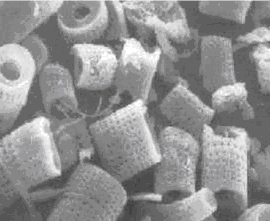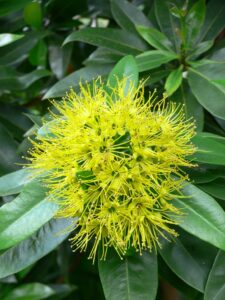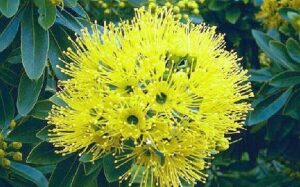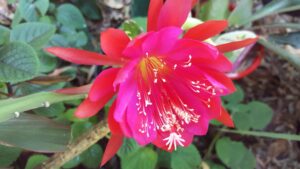Diatomaceous Earth – This magical dust is effective against caterpillars, ants, apohids, codling moth, whitefly, beetles, loopers, mites, snails, slugs, leaf hoppers and a variety of other insect pests.
What is it? Diatomaceous Earth is a naturally occurring siliceous sedimentary mineral compound from microscopic skeletal remains of unicellular algae-like plants call diatoms. These plants have been part of the earth’s ecology since prehistoric times. It is believed that 30 million years ago the diatoms built up into deep chalky deposits of diatomite. The diatoms are mined and ground up to render a powder that looks and feels like talcum powder. Diatomaceous Earth is approximately 3% magnesium, 88% silicon, 3% calcium, 3% sodium, 2% iron and many other trace minerals such as titanium, boron, manganese, copper and zirconium.
Diatomaceous earth is not poisonous, it does not have to be eaten in order to be effective. Its microscopically sharp particles lodge between individual plates of an insect’s waxy exoskeleton, resulting in death by dehydration.
The most important factor when using this as a dust is that it has to be applied in dry conditions, not early morning where there will still be dew about.
When applying the dust it is imperative that you wear a mask as it is not a good idea to inhale it.
Following are three application methods to use with Diatomaceous earth:
Dry Application Methods
Diatomaceous earth is unique in its versatility. It can be used and applied in a way that works best for you. For instance, dry treatments can be applied with a flour sifter when working around the house. You can sprinkle it in cabinets, around baseboards, in window sills, beneath refrigerators or stoves, on a pet bed, in the garbage can, and many other areas. A flour sifter would also be useful for a light treatment on the carpet, when dealing with insects, or you could use it to sprinkle your garage and around the perimeter of your home.
Wet Application Methods
It’s easy to apply diatomaceous earth in a wet mixture. If you are using DE to treat your garden, you can mix DE and water into a spray receptacle. After you’ve mixed the two at a ratio of four tablespoons of DE per gallon of water, apply a thick coat on the tops and undersides of all your plants. When applying it to grass, wet down the grass with the hose. Then apply a heavy layer of dry DE through a dust sprayer onto the grass. Once the water dries, the DE will stick to the grass. Reapply once a month, especially after it rains.
There are even ways to apply a wet mixture of DE as a cleaner around the house. You can also spray DE wet for a natural pesticides, around the home, on the farm, or in the garden.
Other Unique Methods
You can use a turkey baster to apply DE along cracks and corners in your home or other hard to reach places. A salt or pepper shaker will work well for small spaces as well. For another precise method, you can use a paint brush to work the diatomaceous into a specific area. Also, nylons and mesh bags work well to use DE as a deodorizer in your home.
If there is anything further you’d like to know about diatomaceous earth visit Happy DIY Home which has an exhaustive amount of information. This is an American site with lots of other gardening information (and DIY home relevant articles).





